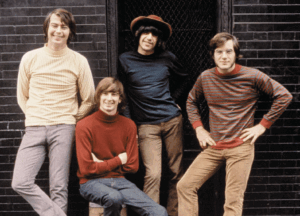Rethinking If “St. Anger” Was Good?

via Metallica / Youtube
St. Anger, released by Metallica in 2003, is an album that has often been criticized by fans and critics alike. However, it is essential to approach any review with an open mind and consider both the positive and negative aspects of the work. While it may not be regarded as Metallica’s finest album, some noteworthy elements deserve recognition.
Unmasking the Contrasting Views
To begin with, it’s worth noting that St. Anger did receive a few positive reviews upon its release. The album holds a score of 65 out of 100 on Metacritic, which, although relatively low compared to Metallica’s other works, doesn’t entirely align with the overwhelmingly negative opinions expressed by many fans.
Rolling Stone, for example, awarded the album four out of five stars, saying:
“No wonder there’s an authenticity to St. Anger’s fury that none of the band’s rap-metal followers can touch. Across 75-plus minutes of savage but intricate structures that recall those pre-Black glory days, Metallica go back to their brutal essence. There’s no radio-size, four-minute rock here, no pop-friendly choruses, no ballads, no solos, no wayward experimentation. Recorded with longtime producer Bob Rock on bass, this is loud, expansive, unrepentant Metallica.”
Moreover, other notable publications also expressed favorable views of the album. Uncut gave it a 4 out of 5 rating, Entertainment Weekly awarded it a B+, and NME rated it 9 out of 10, describing it as a remarkable work. These positive reviews suggest that St. Anger had its merits and resonated with certain listeners and critics.
However, it’s worth considering the possibility of industry favoritism and the influence it may have had on reviews. The world of music journalism often faces commercial pressures, and publications may hesitate to pan a high-profile album by a renowned band.
Shaping Music Reviews and Biases
Advertisements and financial considerations could influence reviewers to provide more positive assessments, safeguarding their relationships with record labels and promoters. While this speculation cannot be confirmed, it underscore the potential biases in the industry.
To support this notion, we can examine the contrasting reviews from British magazines Classic Rock and Metal Hammer. Classic Rock gave St. Anger a rating of 4 out of 10, describing it as “unfettered hell-for-leather nonsense pretty much from beginning to end” and provided an explanation:
“You don’t review a Metallica album, instead you’re invited to an opulent basement bar in Soho to eat and drink and to listen to it. While you’re doing so, PR people study you intently for the merest flicker of emotion to register on your face; it’s like being a hamster in a research lab.”
Simultaneously, Hammer, who is more optimistic and youthful, awarded the album a rating of 9 out of 10 and expressed the following:
“Both musically and spiritually, St. Anger is the most honest, stripped-down, soul-baring exercise that you’re ever likely to hear from the world of Metallica. You can feel through every raging beat and pumping, nervous riff that St. Anger is the sound of a band seizing what they believe might be their last ever chance to stand in a room together under that name. And it’s a gleeful racket that they emit.”
The difference in opinions between these publications may reflect their respective editorial stances and target audiences, suggesting that personal preferences and biases can influence reviews.
The Story Behind
The production quality of St. Anger has frequently drawn criticism from both critics and fans, particularly regarding Lars Ulrich’s drum sound and the lack of guitar solos. These are valid concerns that can affect the listening experience and overall appeal of the album.
However, it is important to remember that the essence of music lies in its significance and the intentions behind it. Despite the shortcomings in production, some critics accurately observed Metallica’s potential goals and intentions with St. Anger.
“The title track is a love song to anger itself, the pivotal line ‘I want my anger to be healthy’ just on the right side of self help,” NME wrote, “while elsewhere there’s the feeling in its many righteous hues: the slow burn of resentment through to the flashpoint of defiance.” The review continued by characterizing the songs as “a stripped back, heroically brutal reflection of this fury.”
Additionally, the documentary film Some Kind of Monster, released in 2004, shed light on the challenging circumstances surrounding the creation of St. Anger. The film revealed the band’s struggles with personal issues, such as James Hetfield’s journey to rehab and Ulrich’s admission of uncertainty about the band’s future. It became evident that the album was a necessary outlet for the band’s survival and potential growth.
Hetfield said later:
“I learned a lot about what I don’t like about me.
“Which was good — it was a good mirror. And I think everyone involved in that movie pretty much felt the same way about themselves.”
Understanding these underlying contexts can provide a different perspective on St. Anger. The album represents a pivotal moment in Metallica’s career, where they confronted their own demons and faced their past traumas. It allowed the band to introspect and work through their emotional baggage, ultimately leading to personal growth and renewed artistic energy.
While it is understandable that some fans may feel let down by St. Anger, it is worth considering the album’s unconventional nature and the circumstances surrounding its creation. Many listeners come into an album with preconceived expectations, making it difficult to fully appreciate and understand the artist’s intent. The negative impact of these expectations may have overshadowed the album’s positive qualities.
“I view St. Anger as an isolated experiment,” Ulrich later commented, further stating:
“We’d already done Ride the Lightning, which I believe is a fine record. It didn’t need to be re-done.”
The drummer asserted that the artistic purpose had been “almost about hurting the listener, about challenging the listener.”
Later, he made the argument that maybe it was similar to how the individuals had subjected themselves and one another to difficult experiences and suffering saying:
“I stand behind it 100% because, at that moment, that was the truth.”
Transcending Criticism
Ultimately, St. Anger deserves recognition for its artistic courage and resilience. Despite its flaws and the potential biases in reviews, it represented an essential chapter in Metallica’s journey, enabling them to confront their past and forge a new path forward. Over time, as listeners gain a better understanding of the album’s context and the band’s growth, perspectives may change. While it may not be considered a masterpiece by many, St. Anger remains an important testament to Metallica’s artistic evolution and their willingness to take risks.



















